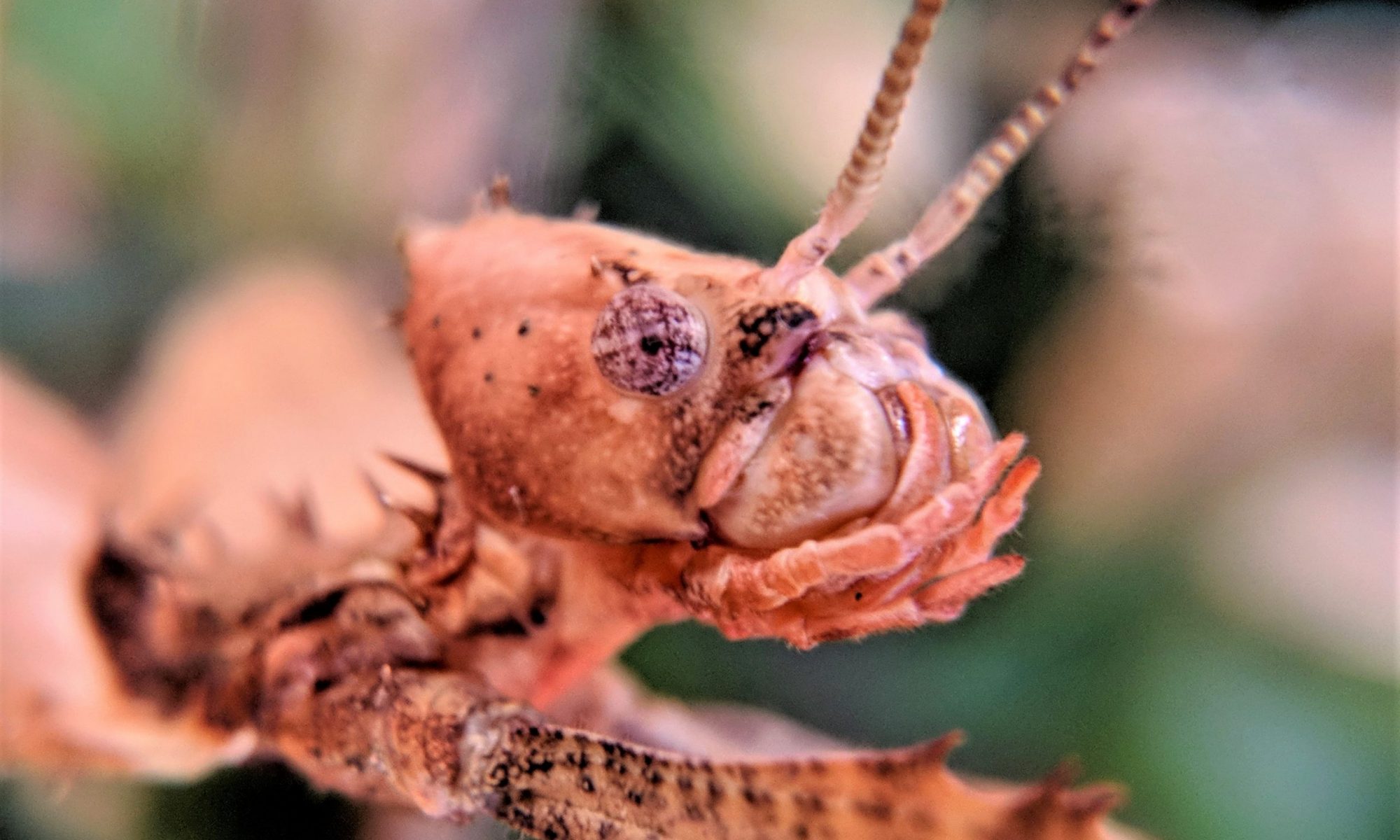You don’t see many of the animals that live in your local area because they are nocturnal. Often it is the Noises in the Night that give us a clue to the nocturnal species that are living in our local area. Other times it is the Scats, Track or Traces that animals leave behind that help us discover who is living in our backyard.
Tawny Frogmouth Podargus strigoides
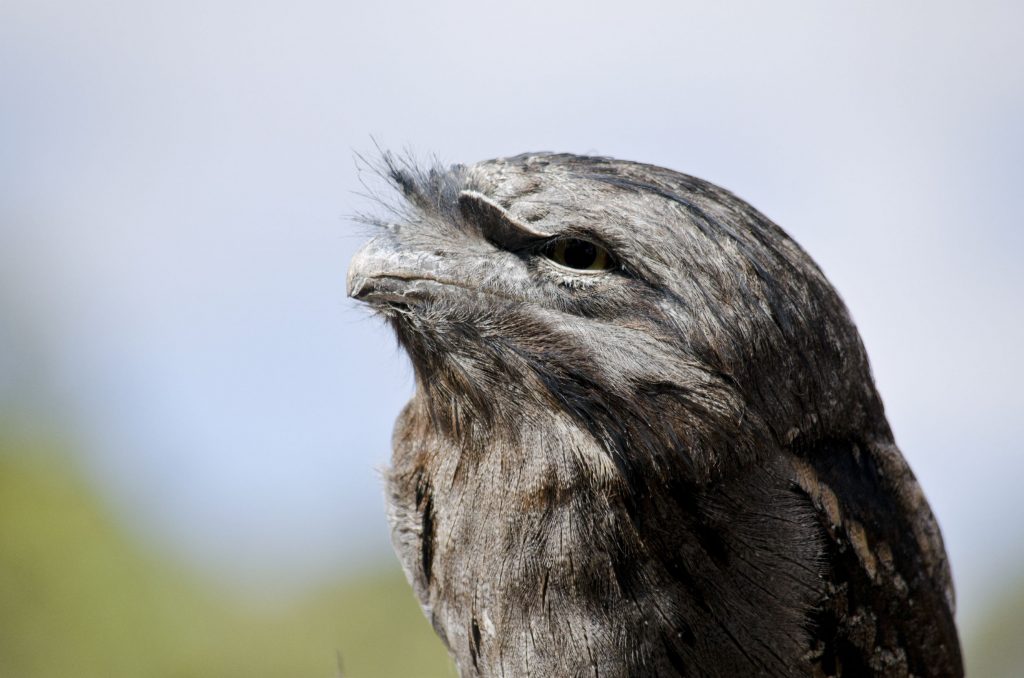
Tawny Frogmouths are a large nocturnal carnivorous birds between 30cm – 55cm long. Their feathers are mottled grey, white and black and the patterns on their feathers help them mimic dead tree branches. They have stocky heads with big yellow eyes. Stiff bristles surround their beak; these ‘whiskers’ may help detect the movement of flying insects. They get the name frogmouth from their large and wide beak .
Tawny Frogmouths are not owls – they’re more closely related to Nightjars.
Tawny Frogmouths mate for life and in the wild they can live up to 14 years. A breeding pair will usually stays in the same territory for over 10 years. Females typically lay two to three eggs each breeding season between August to December. After the chicks hatch, the family can be seen roosting side-by-side. This gives you the chance to see whole family group.
Watch this short video by Matthew Higgins as he follows one family of Tawny Frogmouths as the chicks develop to fledging stage, despite the threats.
Their call is a low booming “Oom-oom-oom-oom” noise. Listen below to see if you have Tawny frogmouths in your backyard.
Powerful Owl Ninox strenua
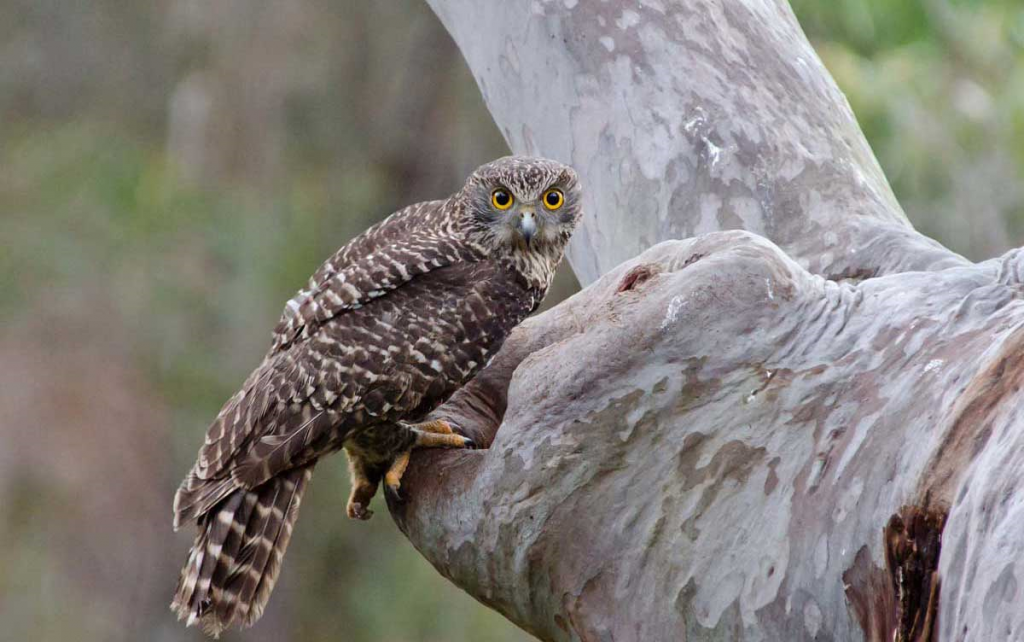
The Powerful Owl is Australia’s largest owl and nocturnal bird. They have a relatively small head and a rounded tail. Their feathers are dark grey to dark grey-brown with white barring, and off-white below, They have distinctive dark v-shaped chevrons on their chest. Their eyes are yellow, set in a dark grey/brown facial mask.
The Powerful Owl mates for life, which can be over 30 years. They defend their territory year-round. They nest in vertical hollows of large old trees.
The call of the Powerful Owl is a deep, double hoot: ‘woo-hoo’. Have you heard their call near you? Have a listen below to compare.
Southern Boobook Ninox novaeseelandiae

The Southern Boobook is the smallest and most common owl in Australia. It is identified by its dark chocolate-brown and rufous-brown feathers that are streaked and spotted with white. The bill is grey with a darker tip, and the feet are grey or yellow. Juvenile Southern Boobooks are almost entirely buff-white below, with conspicuous dark brown facial discs.
The Southern Boobook is nocturnal and birds are often observed perched on an open branch or tree-top. They normally nest is a tree hollows.
The Southern Boobook is also known as the ‘Mopoke’. Listen to the call below to discover if you have heard one before.
Eastern Koel Eudynamys orientalis
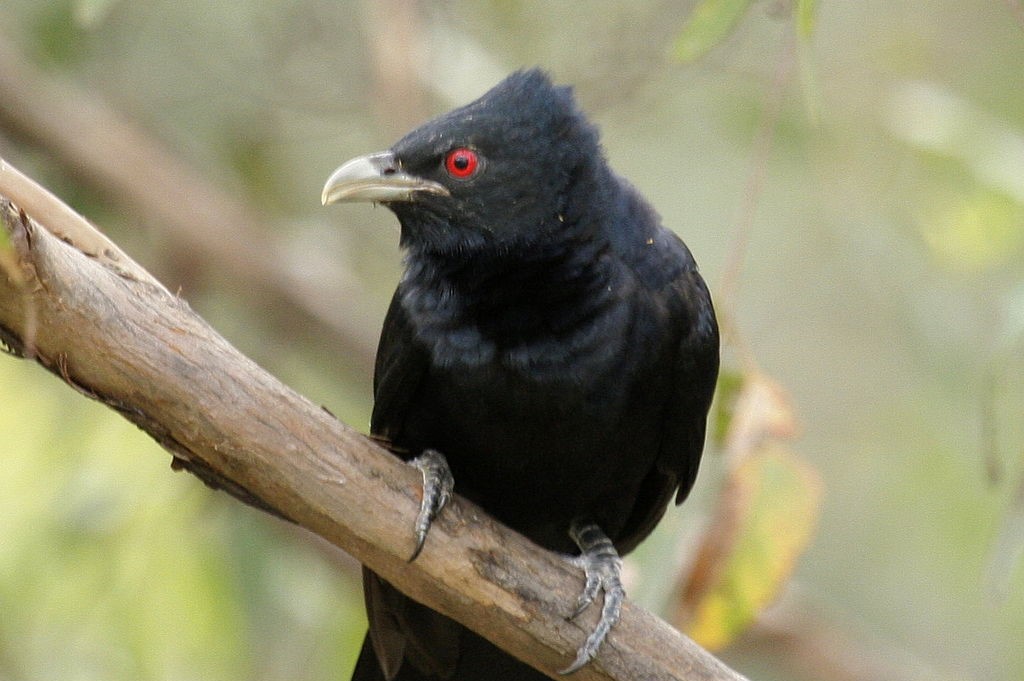
The male Common Koel is easily identified by its entirely glossy black plumage and striking red eye. The Common Koel is a member of the cuckoo family and is a brood parasite which lays its eggs in the nests of other bird species. Adults are rather shy and they are heard much more than seen. The fledglings beg loudly for food from their foster parents.
In late September and early October each year the Common Koels arrive in Australia from their northern winter homes to breed. They leave southern Australia in about March to return north.
Grey Headed Flying fox Pteropus poliocephalus
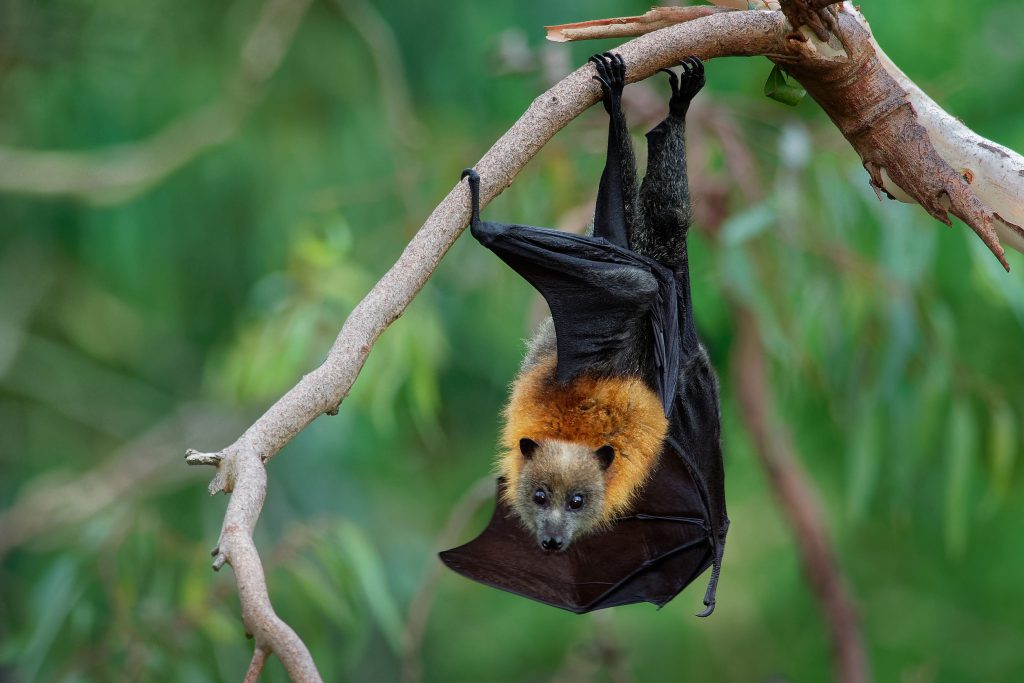
The Grey-headed Flying-fox is the largest Australian bat with a head and body length up to 30cm. It has dark grey fur on the body with the distinctive ginger collar encircling the neck. The wings are black and the wingspan can reach up to 1 m.
Grey-headed Flying-foxes are generally found within 200 km of the eastern coast of Australia. Ranging from Rockhampton in Queensland to Adelaide in South Australia. However when natural resource are in shortages they may be found outside these locations.
The Grey-headed Flying-fox forms roosting camps that are generally located within 20 km of a regular food source. These camps are commonly found in gullies, close to water and in vegetation with a dense canopy. They can travel up to 50km to forage for food and will often be heard in urban areas feeding on nectar, pollen and fruits.
Common Brushtail Possum Trichosurus vulpecula
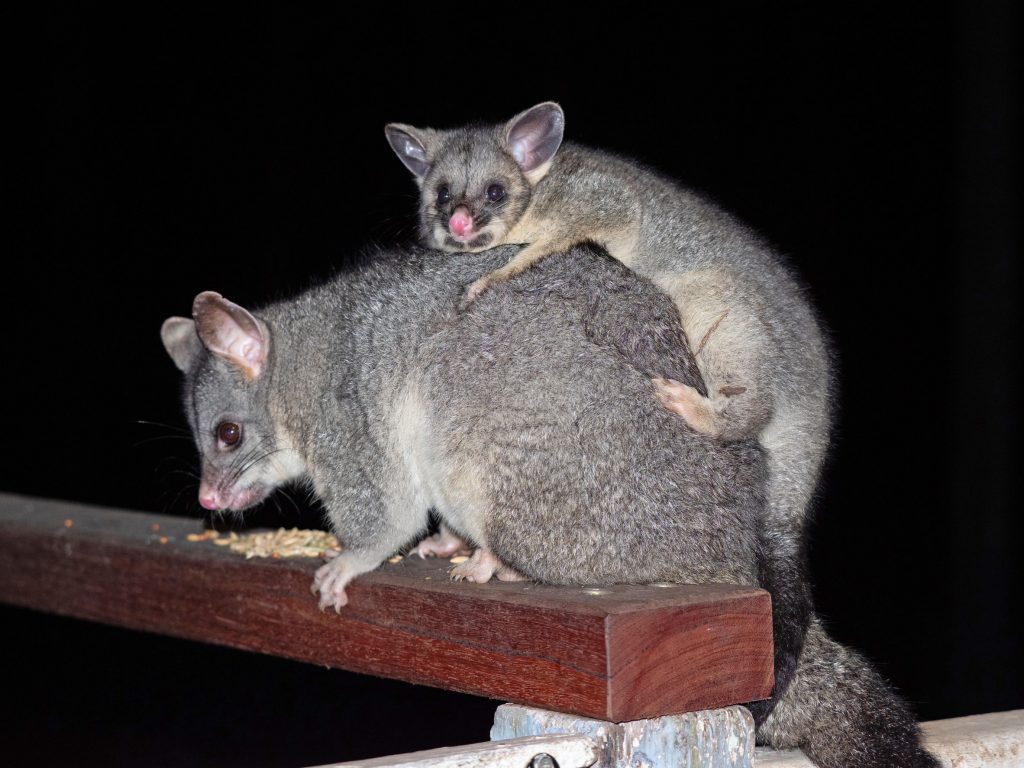
The Common Brushtail Possum is widely distributed across Australia living in urban areas, forests, woodlands and heath. It has adapted to urban living and often comes into contact with people.
Brushtailed possums are about as big as domestic cats and have a pointed snout, pink nose, long whiskers and large ears. They also have sharp claws, which they use to climb trees and comb their fur.
Striped Marsh Frog Limnodynastes peronii
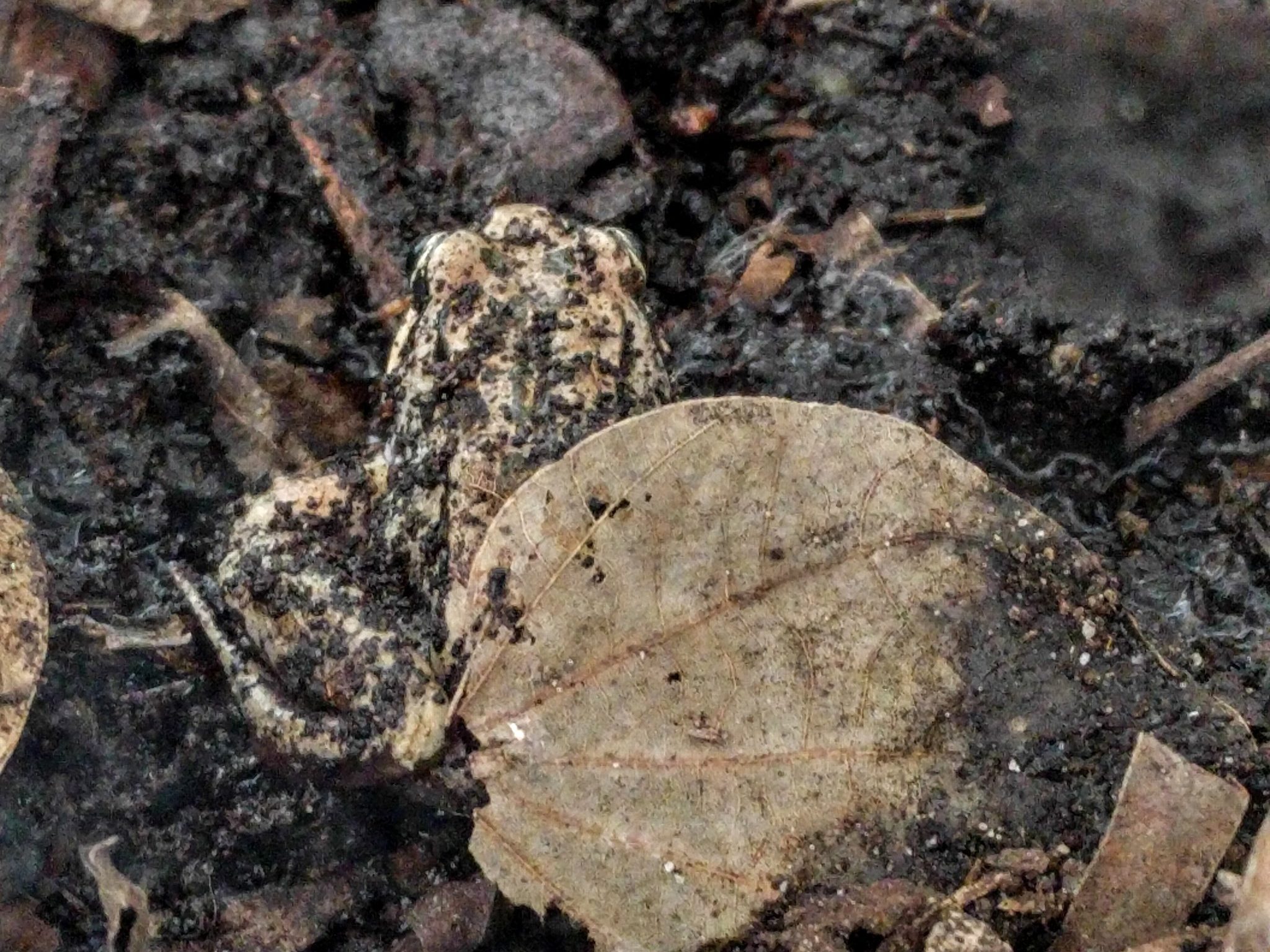
The Striped Marsh Frogs is a large species reaching up to 7.5 cm in body length. They have distinctive brown and dark brown longitudinal stripes on their back. They sometimes have a cream-coloured or reddish stripe along the middle of their back.
The easiest way to recognise the Striped Marsh frog is from it’s call. A single, short “tuk” or “whuck” which is repeated every few seconds.
Green Tree Frog Litoria caerulea
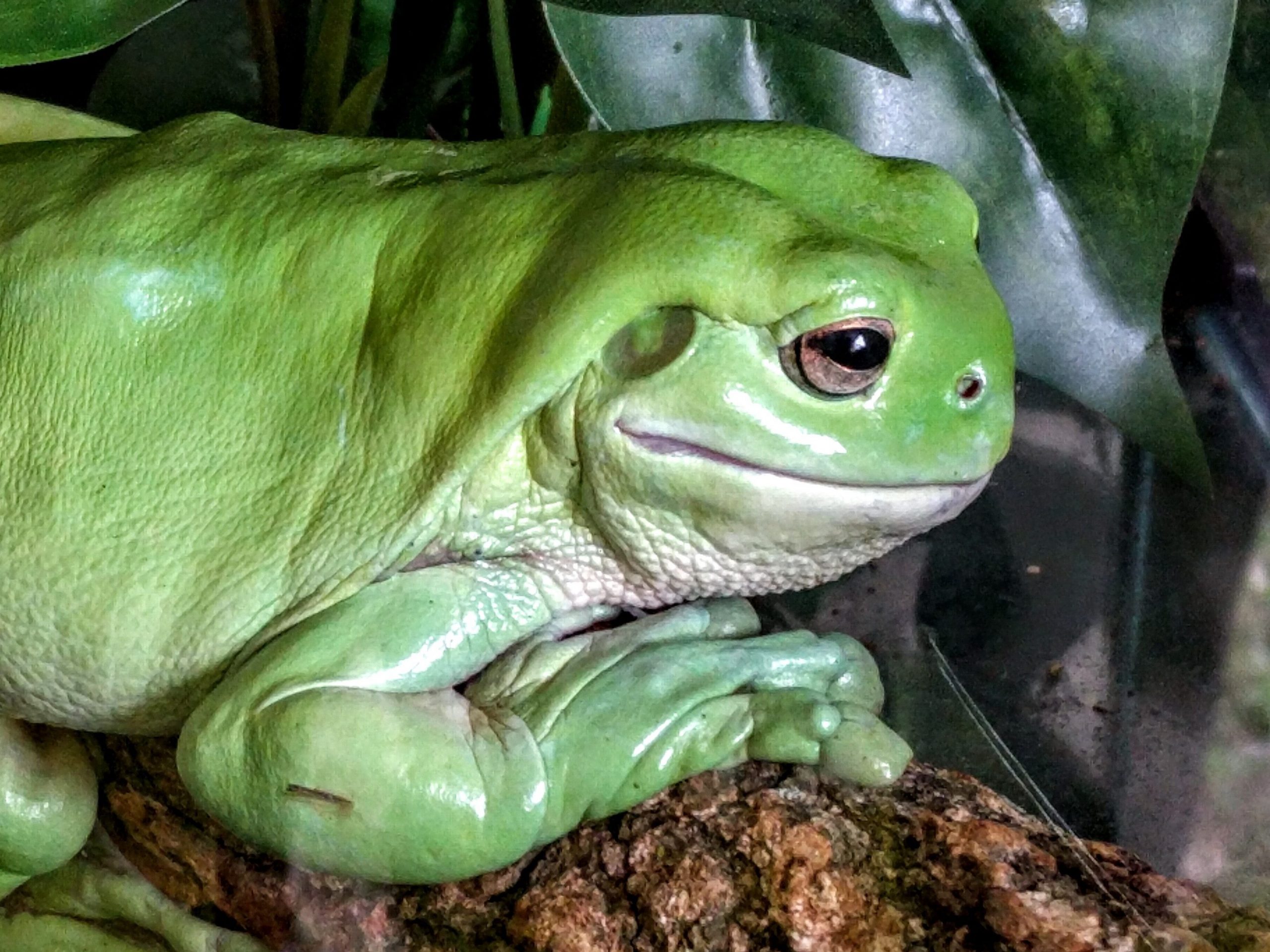
The Green Tree Frog is a large species reaching up to 11 cm in body length. It has a green back, sometimes with several small white spots. The belly is white. The pupil is horizontal and the iris is gold. Fingers and toes are three-quarters webbed, both with large discs.
The are found across northern WA, northern NT, northeastern SA, and most of QLD and NSW.
Noises in the Night video
Have a listen to a variety of nocturnal animals sounds and see if you can identify any?
Other animals are easily recognised by their call, day or night
Kookaburra
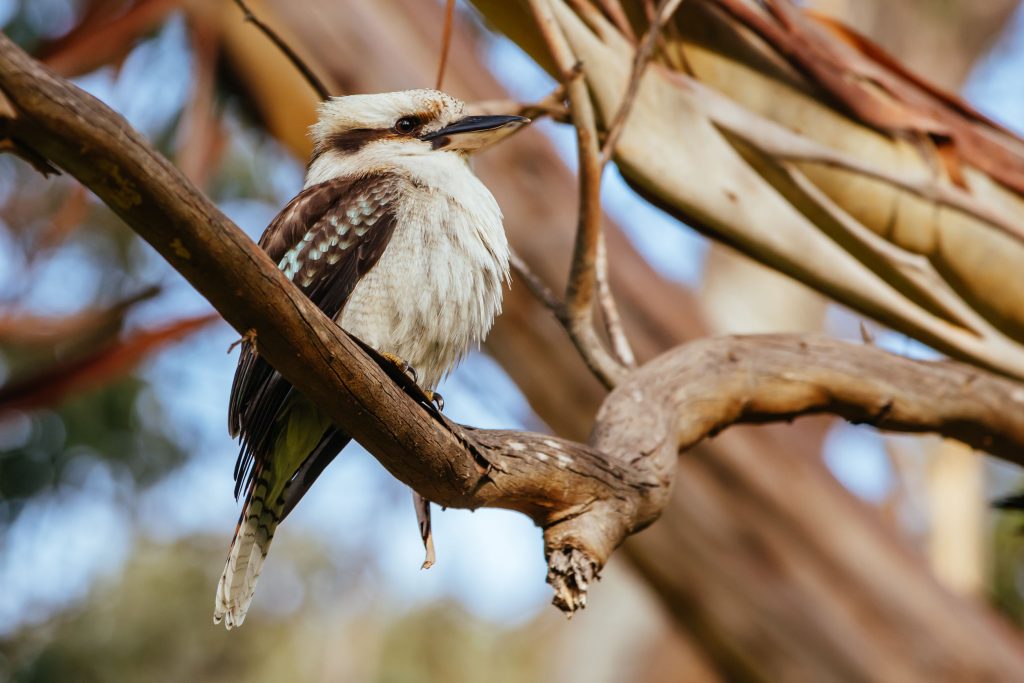
Kookaburra is recognisable by it’s plumage and voice and is one of the largest members of the kingfisher family. Kookaburras are found throughout eastern Australia.
The cackle of the Kookaburra is a territorial call to warn other birds to stay away. The loud ‘koo-koo-koo-koo-koo-kaa-kaa-kaa’ is often sung in a chorus with other individuals. The Laughing Kookaburra also has a shorter ‘koooaa’, which is normally given when accompanied by other members of its family group.
Sulphur-crested Cockatoo Cacatua galerita
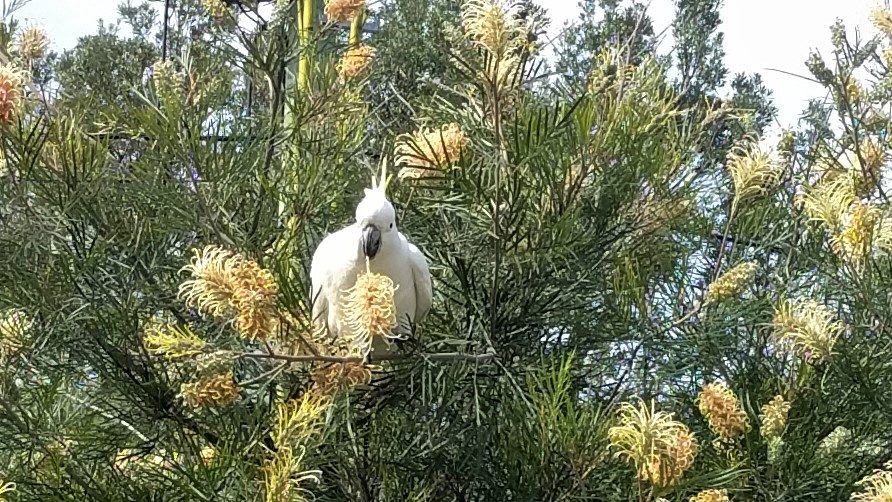
The Sulphur-crested Cockatoo is a large white parrot. It has a dark grey-black bill, a distinctive sulphur-yellow crest. The Sulphur-crested Cockatoo is a loud, noisy bird that is very common in urban areas across Australia. They are intelligent and adaptable birds and have even been seen drinking from bubblers and some have worked out how to open wheelie bins to get at food scraps.
Some Frogs call during the day
Help to record frog calls using the free FrogID app and uncover which frogs live in your backyards, local parks and bushlands. Your recording can help identify changes to local frog populations and inform frog conservation across Australia. Download the oday and help us count Australia’s frogs.
Listen below to the Common Eastern Froglets Crinia signifera and Striped Marsh Frogs Limnodynastes peronii calling.
Common Eastern Froglet Crinia signifera
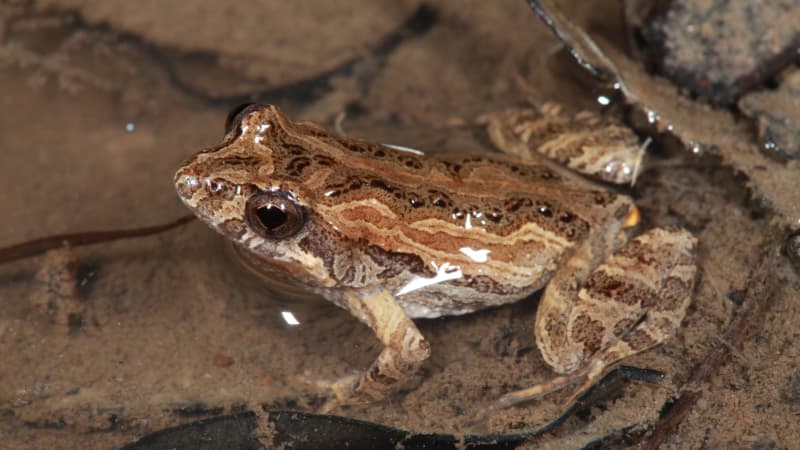
This tiny frog is only 3cm in size and if very commonly heard but rarely seen. They are common and widespread across south-eastern Australia. Their call is a repetitive “crick, crick, crick, crick, crick”.
Photo: Stephen Mahony
Striped Marsh Frog Limnodynastes peronii
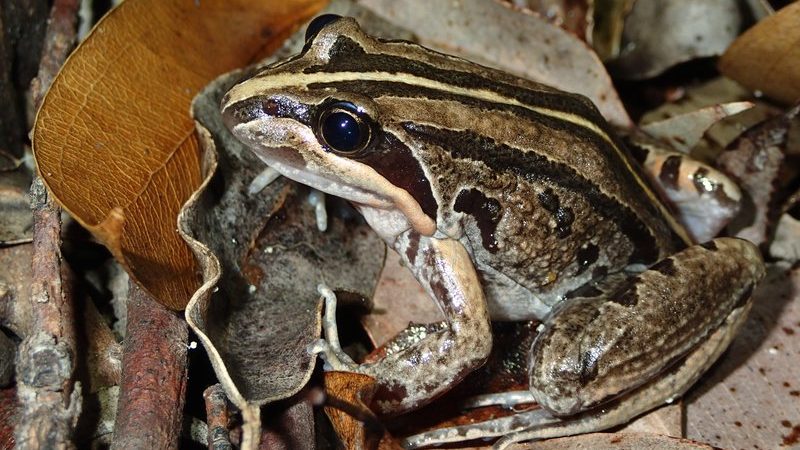
This is a large species of frog found down the east coast of Australia. Their call is a single, short “tuk” or “whuck” which is repeated every few seconds.
Photo: Jodi Rowley
Create a Wildlife Friendly Backyard
Attracting birds to your backyard
Attract birds to your backyard by creating a garden that will provide food, shelter and nesting materials and sites. Local flowering plants and fruit trees provide birds with nectar and seeds. To provide birds with some protein rich food, use mulch to encourage worms, insects and grubs to thrive. Plant dense prickly native shrubs for shelter, hang up nesting boxes and install a bird bath.
Create a frogs friendly backyard
Encourage frogs to come to live and breed in your backyard. Create a small shallow pond in an area that is partly shaded. Include thick ground hugging plants around part of the pond to provide areas of warmer and cooler water. Your pond will need some sunlight to encourage algae and other plants that provide food for tadpoles. Make sure the banks slope gently so that the frogs can get out. Add some rocks and logs to provide shelter for adult frogs.
Minibeasts in your backyard
Not all bugs are pests. Good bugs pollinate plants, break down dead flora and fauna, aerate the soil and provide for other wildlife. They can even help keep harmful pests away. Create an inviting environment for good bugs by planting plenty of native plants, wildflowers and herbs and use chemical-free pest control when the pests do creep in.
Find out what you can do to create a wildlife friendly backyard with the What’s in your Backyard activity series.

